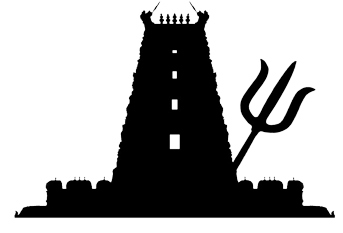Sri Sivasangkari Amman
The presiding deity at Sri Sivasangkari Aalayam is none other Sri Sivasangkari. Her warm energy welcomes devotees from all walks of life to Her abode to obtain Her blessings.
Sri Sivasangkari Amman has been gracing devotees for over 55 years now.
Varahi Amman
Goddess Varahi Amman is a Hindu deity representing the feminine aspect of the all-pervading power of creation, which is inherent in all animate and inanimate beings.
She is one of the Matrikas, a group of seven Mother Goddesses which are present in the form of Shakti, or power. Shri Varahi Devi is the female counterpart of Varaha, the boar Avatar of Lord Vishnu
Vishnu Durga
Vishnu Durga, also known as Narayani, is one among the numerous forms of Goddess Durga. Vishnu-Durga is regarded as the sister of Lord Krishna, born immediately before him.
Vishnu Durga shares many characteristics of Lord Vishnu including the dark complexion. She is four-armed and carries a conch and Sudarshana chakra. Her normal right hand is in ‘Abhaya Mudra’ (blessing or protection).
Mahaletchumi
Mahaletchumi is one of the principal goddesses in Hinduism. She is the goddess of wealth, fortune, power, beauty, fertility, and prosperity. Along with Parvati and Saraswathi, she forms the Tridevi of Hindu goddesses.
Mahaletchumi is venerated as the prosperity aspect of the Mother goddess. Mahaletchumi is both the consort and the divine energy (shakti) of the Hindu god Vishnu, the Supreme Being of Vaishnavism.
Saraswathi
Saraswathi is the goddess of knowledge, music, art, speech, wisdom, and learning. Along with Parvati and Mahaletchumi, she forms the Tridevi of Hindu goddesses.
Saraswathi is worshipped by all knowledge seekers, especially students to ensure their pursuit of learning is successful and blessed upon Her.
Venkatachalapathy
Venkatachalapthy is a form of the God Vishnu and is the presiding deity of the Venkateswara Temple, located in Tirupati.
His exact form has been brought from there to our temple for our worship.
Brahadeeswarar
Brahadeeswarar is a lingam form of lord Shiva. This is the exact presiding god in Brihadeeswara Temple (Tanjai Periya Kovil) built by the great Raja Raja Cholan.
Soil from that temple was brought in here to invoke the same presence in our temple.
Selva Ganapathi
Lord Ganapathi is revered as the lord of the Ganas; meaning group, community, or elements. Selva Ganapati refers more specifically to the wealth portions of our lives.
He is widely revered as the remover of obstacles and thought to bring good luck and the deva of intellect and wisdom. As the god of beginnings, He is honoured at the start of rites and ceremonies.
Sri Balamurugan
The child form of Murugan is called Balamurugan. Balamurugan has done a lot of good deeds during his childhood itself, like killing powerful demons like Surapadman, protected the devas and he had shown his Viswaroopa darshan before the demigods.
Muruga was born from the third eye spark of Lord Shiva, and hence he contains all of his good characteristics.
Sri Muniswarar
Muniswarar is a popular Hindu deity within Hinduism and is worshipped by many. He is sometimes referred to by different names, such as Muniyandi, Muniyappan, Muni Ayya, and Ayya amongst many others.
Muniswarar is mostly considered a guardian deity but is in some cases hierarchically considered to be on par with Lord Shiva.
Sri Anjeneyar
Sri Anjenayar or Hanuman is another popular deity worshipped in Malaysia. He is often worshipped for his courage, strength and loyalty.
Anjenayar is well known for His contributions in Hindu epics such as Ramayana and Mahabaratha.
Navagraha
The Navagraha are nine heavenly bodies and deities that influence human life on Earth.
The term is derived from nava, meaning nine and graha, meaning planets. The nine parts of the navagraha are the Sun, Moon, Mercury, Venus, Mars, Jupiter, Saturn, and the two nodes of the Moon.
Vasantha Mandapam
Vasantha Mandapam houses all the temple’s precious Utsava Murthi (main idols). These idols will be placed in the Garbagriha (sanctum sanctorum) and worshipped during festivals.
